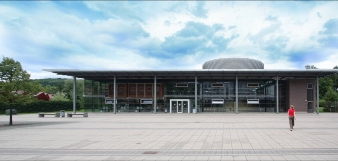Version [18204]
Dies ist eine alte Version von PmLifeCyrcle erstellt von RonnyGertler am 2012-12-12 16:38:21.

Project Life Cyrcle
| File | Last modified | Size |
|---|---|---|
| PmLifeCyrcle_function.gif | 2023-10-06 18:37 | 23Kb |
| PmLifeCyrcle_hollyworks.gif | 2023-10-06 18:37 | 39Kb |
| PmLifeCyrcle_organisation.gif | 2023-10-06 18:37 | 27Kb |
| PmLifeCyrcle_phases.gif | 2023-10-06 18:37 | 11Kb |
| PmLifeCyrcle_projectized_structure.gif | 2023-10-06 18:37 | 39Kb |
| PmLifeCyrcle_stage_gates.gif | 2023-10-06 18:37 | 16Kb |
| PmLifeCyrcle_stakeholders.gif | 2023-10-06 18:37 | 21Kb |
| PmLifeCyrcle_traits.gif | 2023-10-06 18:37 | 21Kb |
Inhalte von Prof. Dr. Kurt Englmeier
Consider any project, and you'll also have to consider any phases within the project. Construction projects have definite phases. IT-projects have definite phases. Marketing, sales, and internal projects all have definite phases. Projects - all projects - are comprised of phases. The sum of a project's phases equates to the project's life cycle. Project integration management is the heart of project management and is made up of the day-to-day processes the project manager relies on to ensure that all of the parts of the project work together. PIM gears the project work together.
Project Life Cycle - Example
Because every project life cycle is comprised of phases, it's safe to assume that each phase has a specific type of work that allows the project to move towards the next phase in the project. In a simple construction example, this is easy to see:
Phase 1: Planning and pre-build
Phase 2: Permits and filings
Phase 3: Prep and excavation
Phase 4: Basement and foundation
Phase 5: Framing
Phase 6: Interior
Phase 7: Exterior
Typically, one phase is completed before the next phase begins, but sometimes project managers allow phases to overlap because of time constraints. When time's an issue and a project manager allows one phase to begin before the last phase is completed, it's called fast tracking. Fast tracking, as handy as it is, increases the risk within a project, however.
A project is an uncertain business—the larger the project, the more uncertainty. It's for this reason, among others, that projects are broken down into smaller, more manageable phases. A project phase allows a project manager to see the project as a whole and yet still focus on completing the project one phase at a time.
Each project has its own unique attributes, activities, and requirements from stakeholders. Within each project, one attribute that typically varies from project to project is the project life cycle. As the name implies, the project life cycle determines not only the start of the project, but also when the project should be completed.
Project Feasibility Study
The project's feasibility is part of the initiating process. Once the need has been identified, a feasibility study is called for to determine if the need can realistically be met. The outcome of the feasibility study may tell management several things.
● Whether the concept should be mapped into a project
● If the project concept is worth moving forward with
● The expected cost and time needed to complete the concept
● The benefits and costs to implement the project concept
● A report on the needs of the organization and how the project concept can satisfy these needs
Common Traits of Projects
While projects differ, there are other common traits from project to project. The following lists a few examples:
● Phases are generally sequential, as the completion of one phase allows the next phase to begin.
● Cost and resource requirements are lower at the beginning of a project, but grow as the project progresses. Projects spend the bulk of their budget and
use the most resources during the executing process. Once the project moves into the final closing process, costs and resource requirements taper off dramatically.
● Projects fail at the beginning, not at the end. In other words, the odds of completing are low at launch and high at completion. It also means that decisions made at
the beginning of a project live with the project throughout and that a poor decision in the early phases can cause failure in the later phases.
● The further the project is from completing, the higher the risk and uncertainty. Risk and doubt decrease as the project moves closer to fulfilling the project vision.
● Changes are easier and more likely at the early phases of the project life cycle than at the completion. Stakeholders can have a greater influence on the outcome of the project deliverables in the early phases, but in the final phases of the project life cycle, their influence on change diminishes. Thankfully changes at the beginning of the project generally cost less and have lower risk than changes at the end of a project.

CategoryPmMa
Diese Seite wurde noch nicht kommentiert.





